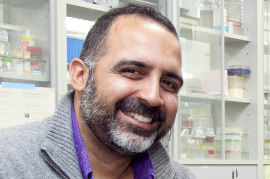Dr. Raj Ladher
Inner ear hair cells are the the mechanosensors of the vertebrate inner ear. These ciliated mechanoreceptors play important roles in the sensation of sound and balance. Mechanosensory hair cells posses cellular adaptations that can, with a high degree of sensitivity, transduce the mechanical energy associated with these modalities, into electrochemical stimuli. These hair cells themselves are housed in a complex organ, the inner ear. This complex organ forms from a relatively simple structure known as the otic placode, found in the surface ectoderm of the early embryo. It is clear that the inner ear and its constituent cell types result from dynamic epigenetic processes that convert ectoderm into otic placode. Developmental mechanisms then subdivide the otic placode into different cellular territories that include both sensory and non-sensory progenitors. These form as a result of balancing specification and patterning with proliferation, and then placing the maturation of these cell-types under an exquisite level of control. We want to understand the blueprint for making an inner ear, with particular emphasis on how the cells integrate extrinsic instructions, the genes that they control, and the cellular and sub-cellular changes that drive phenotypic changes that adapt the inner ear hair cell to its function.



